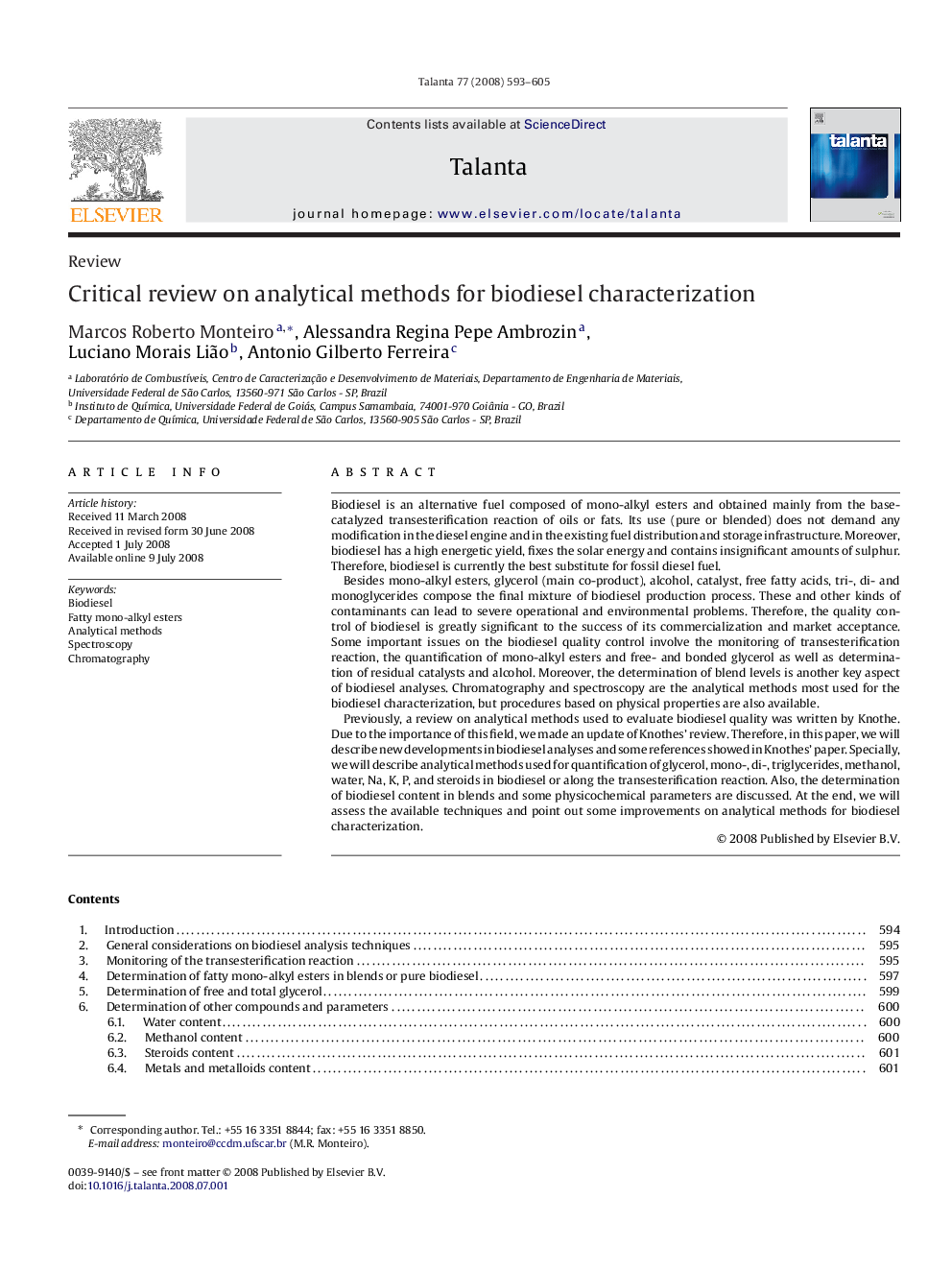| Article ID | Journal | Published Year | Pages | File Type |
|---|---|---|---|---|
| 1243109 | Talanta | 2008 | 13 Pages |
Biodiesel is an alternative fuel composed of mono-alkyl esters and obtained mainly from the base-catalyzed transesterification reaction of oils or fats. Its use (pure or blended) does not demand any modification in the diesel engine and in the existing fuel distribution and storage infrastructure. Moreover, biodiesel has a high energetic yield, fixes the solar energy and contains insignificant amounts of sulphur. Therefore, biodiesel is currently the best substitute for fossil diesel fuel.Besides mono-alkyl esters, glycerol (main co-product), alcohol, catalyst, free fatty acids, tri-, di- and monoglycerides compose the final mixture of biodiesel production process. These and other kinds of contaminants can lead to severe operational and environmental problems. Therefore, the quality control of biodiesel is greatly significant to the success of its commercialization and market acceptance. Some important issues on the biodiesel quality control involve the monitoring of transesterification reaction, the quantification of mono-alkyl esters and free- and bonded glycerol as well as determination of residual catalysts and alcohol. Moreover, the determination of blend levels is another key aspect of biodiesel analyses. Chromatography and spectroscopy are the analytical methods most used for the biodiesel characterization, but procedures based on physical properties are also available.Previously, a review on analytical methods used to evaluate biodiesel quality was written by Knothe. Due to the importance of this field, we made an update of Knothes’ review. Therefore, in this paper, we will describe new developments in biodiesel analyses and some references showed in Knothes’ paper. Specially, we will describe analytical methods used for quantification of glycerol, mono-, di-, triglycerides, methanol, water, Na, K, P, and steroids in biodiesel or along the transesterification reaction. Also, the determination of biodiesel content in blends and some physicochemical parameters are discussed. At the end, we will assess the available techniques and point out some improvements on analytical methods for biodiesel characterization.
